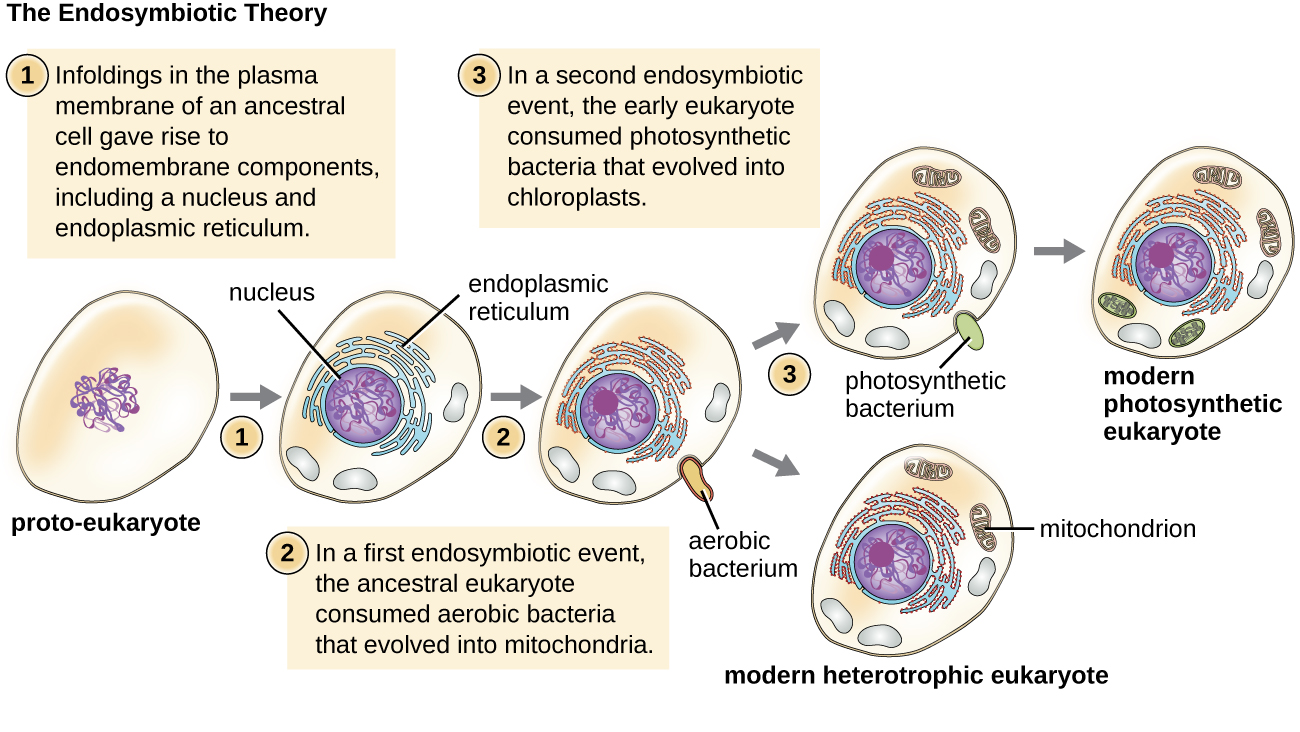| << Chapter < Page | Chapter >> Page > |
Again, this hypothesis was not initially popular, but mounting genetic evidence due to the advent of DNA sequencing supported the endosymbiotic theory , which is now defined as the theory that mitochondria and chloroplasts arose as a result of prokaryotic cells establishing a symbiotic relationship within a eukaryotic host ( [link] ). With Margulis’ initial endosymbiotic theory gaining wide acceptance, she expanded on the theory in her 1981 book Symbiosis in Cell Evolution . In it, she explains how endosymbiosis is a major driving factor in the evolution of organisms. More recent genetic sequencing and phylogenetic analysis show that mitochondrial DNA and chloroplast DNA are highly related to their bacterial counterparts, both in DNA sequence and chromosome structure. However, mitochondrial DNA and chloroplast DNA are reduced compared with nuclear DNA because many of the genes have moved from the organelles into the host cell’s nucleus. Additionally, mitochondrial and chloroplast ribosomes are structurally similar to bacterial ribosomes, rather than to the eukaryotic ribosomes of their hosts. Last, the binary fission of these organelles strongly resembles the binary fission of bacteria, as compared with mitosis performed by eukaryotic cells. Since Margulis’ original proposal, scientists have observed several examples of bacterial endosymbionts in modern-day eukaryotic cells. Examples include the endosymbiotic bacteria found within the guts of certain insects, such as cockroaches, A.E. Douglas. “The Microbial Dimension in Insect Nutritional Ecology.” Functional Ecology 23 (2009):38–47. and photosynthetic bacteria-like organelles found in protists. J.M. Jaynes, L.P. Vernon. “The Cyanelle of Cyanophora paradoxa : Almost a Cyanobacterial Chloroplast.” Trends in Biochemical Sciences 7 no. 1 (1982):22–24.

Prior to the discovery of microbes during the 17th century, other theories circulated about the origins of disease. For example, the ancient Greeks proposed the miasma theory , which held that disease originated from particles emanating from decomposing matter, such as that in sewage or cesspits. Such particles infected humans in close proximity to the rotting material. Diseases including the Black Death, which ravaged Europe’s population during the Middle Ages, were thought to have originated in this way.
In 1546, Italian physician Girolamo Fracastoro proposed, in his essay De Contagione et Contagiosis Morbis , that seed-like spores may be transferred between individuals through direct contact, exposure to contaminated clothing, or through the air. We now recognize Fracastoro as an early proponent of the germ theory of disease , which states that diseases may result from microbial infection. However, in the 16th century, Fracastoro’s ideas were not widely accepted and would be largely forgotten until the 19th century.

Notification Switch
Would you like to follow the 'Microbiology' conversation and receive update notifications?